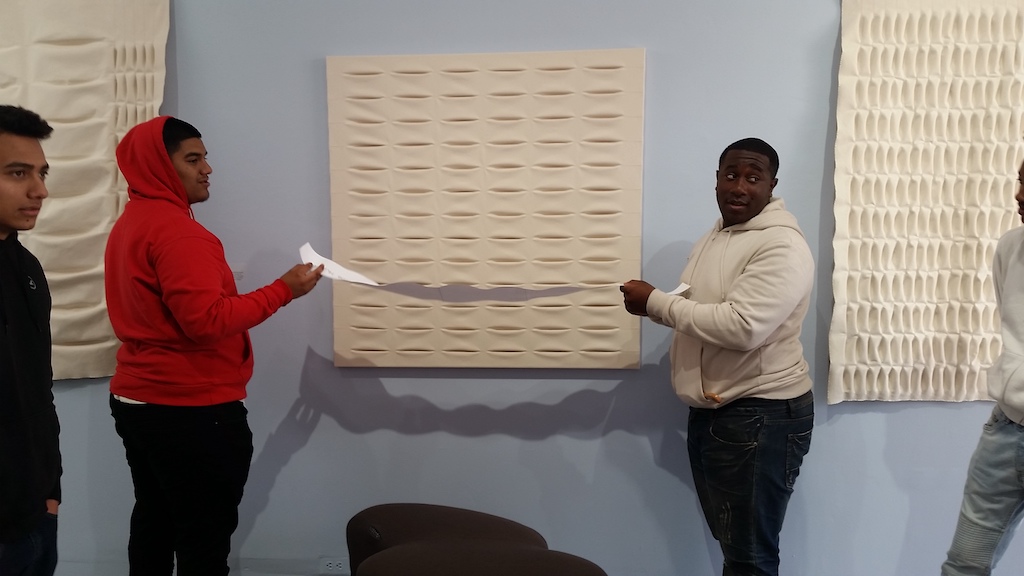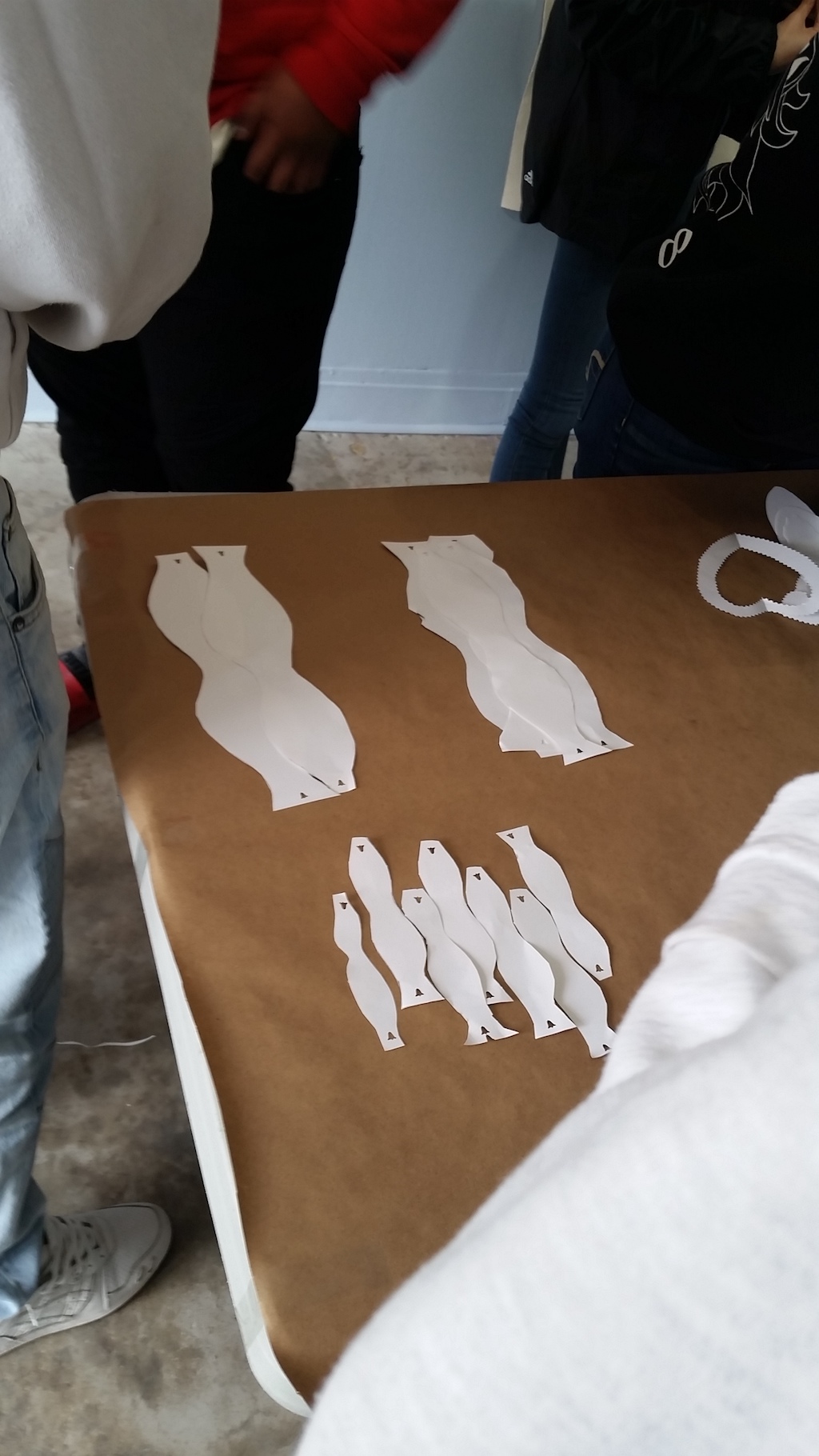Fairfax High Seniors Visit “Mary Little: The Shape of Cloth”
Fairfax Visual Arts Magnet students visited Mary Little: The Shape of Cloth at the Craft in America Center today. They expressed their opinions on furniture and design, and their direct relationship with the visual arts. Students discussed their own sewing project, which was led by their art teacher, Amy Dean, to complement this exhibition visit. We were informed that the students were given the task of planning, designing, and fabricating their own pillows using batik-dyed cloth that they created. Because of this assignment, the students had prior knowledge of how basic patterns are used in sewing processes. At the Craft in America Center they worked with paper, scale, pattern making and design in order to understand the depth of work that goes into creating one of Mary Little’s soft sculptures.
One of the key discussions we had as a group was that of the valuation of the art work. The students that visit the Center never fail to ask the price of the work that is on display. “How much does it cost? Why is it worth so much? Do people really need it? Can we use it, is it functional? Do people actually buy this?” It is the student’s way of making sense of artists, their work, and their contributions as professionals working in their field. Does it pay to have a career in the arts? What does it take to become successful in the arts? When the students ask these questions, we address them in a manner that creates a dialogue about professional pathways, consumerism and the art market. How much did those Nikes cost? How long do you think it takes to make a luxury vehicle? How do you measure the amount of time and energy spent creating a video game, a platinum album, or a film? We broaden their understanding and knowledge of the value of art by discussing the hand made and the importance of craftsmanship and conceptual innovation in art and design.
The field trip encouraged students to rethink their ideas of art and design. The hands-on activity forced them to visualize sculptures created solely through scale, pattern repetition, and flat materials. The class collaborated in teams to produce their own wall hangings and in the end, they were able to take them back to school with them.










